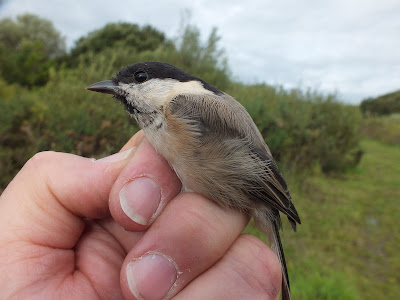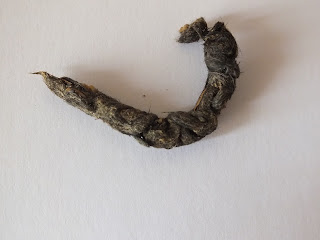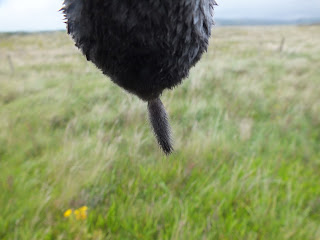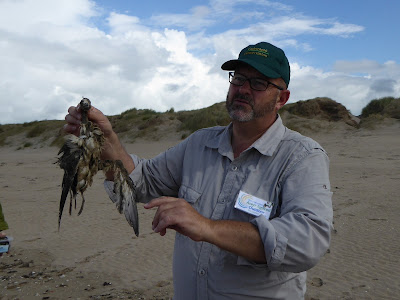This morning, in seemingly good conditions I went through the assessment process, it was tough being under the spotlight but seemingly I am capable enough to have been supported in my application to upgrade, the only downside was the overall lack of numbers of birds, although with 12 species of birds the assessor was able to see me handle, age and assess a good range of birds, then rain stopped play!
With Blackcap (11), plus numbers of Great Tits, Blue Tits, Coal Tits, Robins, Dunnocks, with Goldcrest, Treecreeper, Wren, Blackbird, Chiffchaff, and Willow Tit (1).
 |
| Willow Tit |
The Willow Tit was the most interesting bird, as it was a "control", having been ringed originally across the way at WWT Llanelli a few weeks ago as a juvenile (BTO code 3J).This is a good indication of dispersal, albeit a short distance, from its natal area and a good record for the reserve.
There are a few more hoops to jump through before I may be granted an A class ringing permit, so hold on....
















